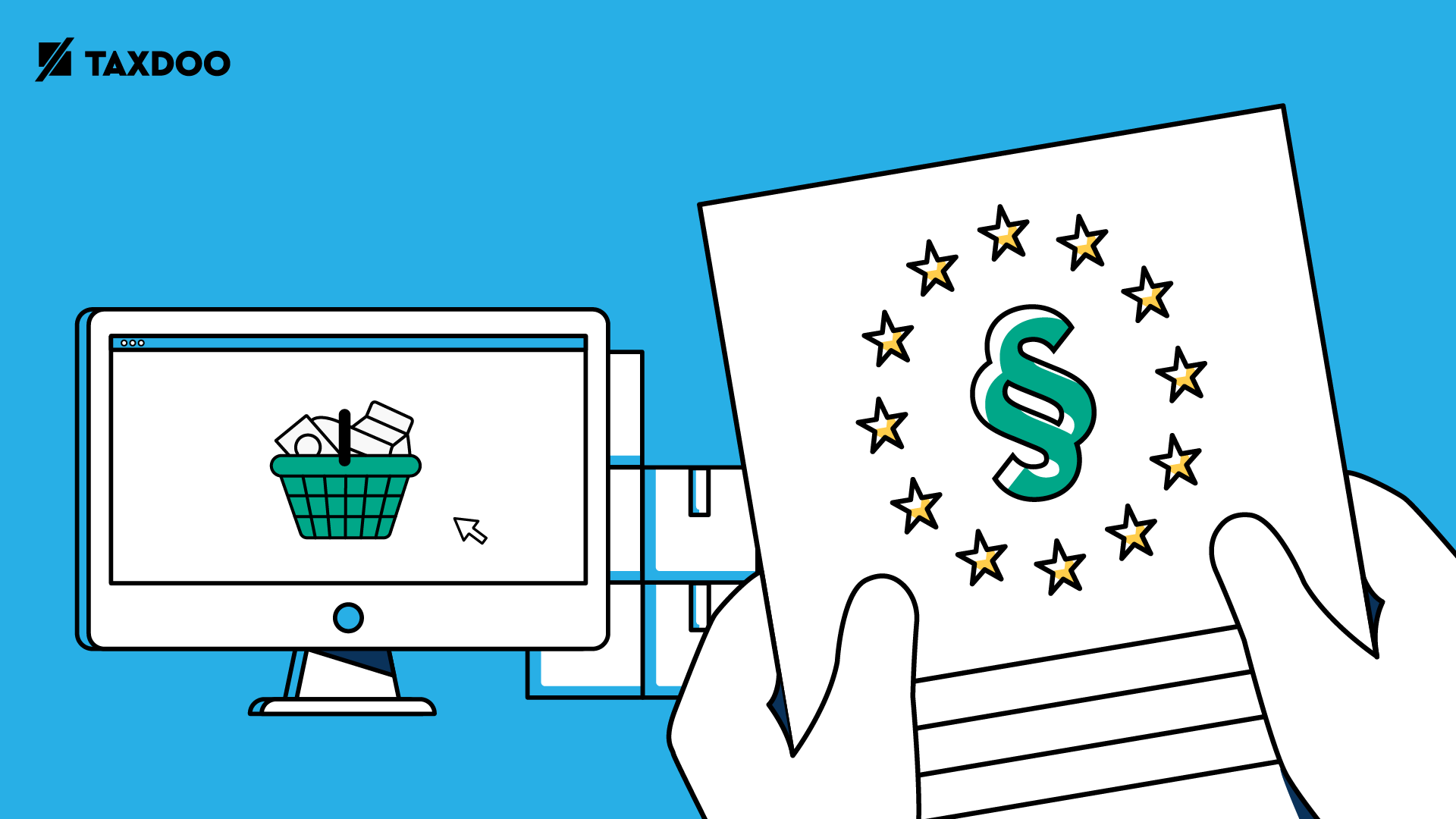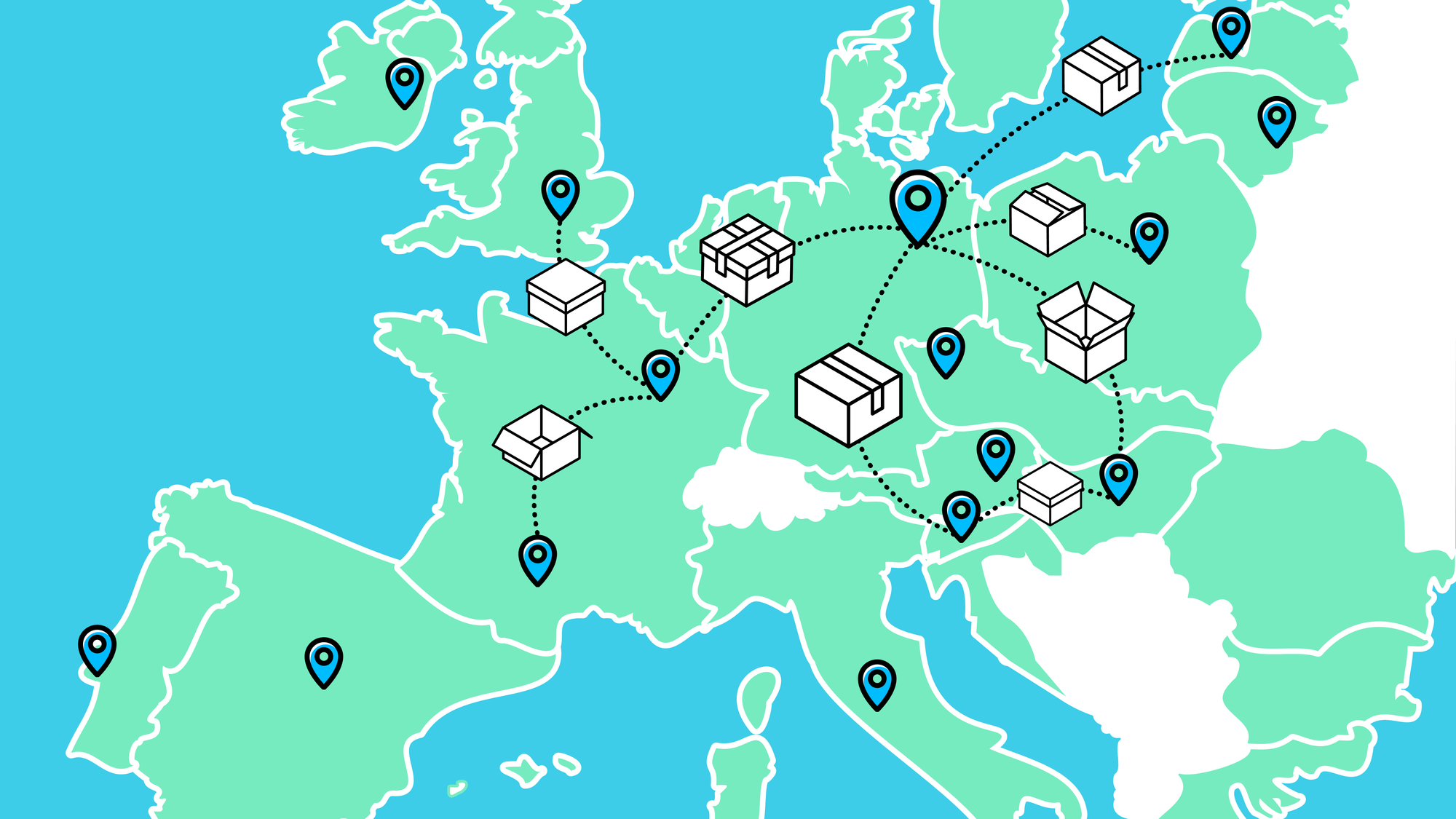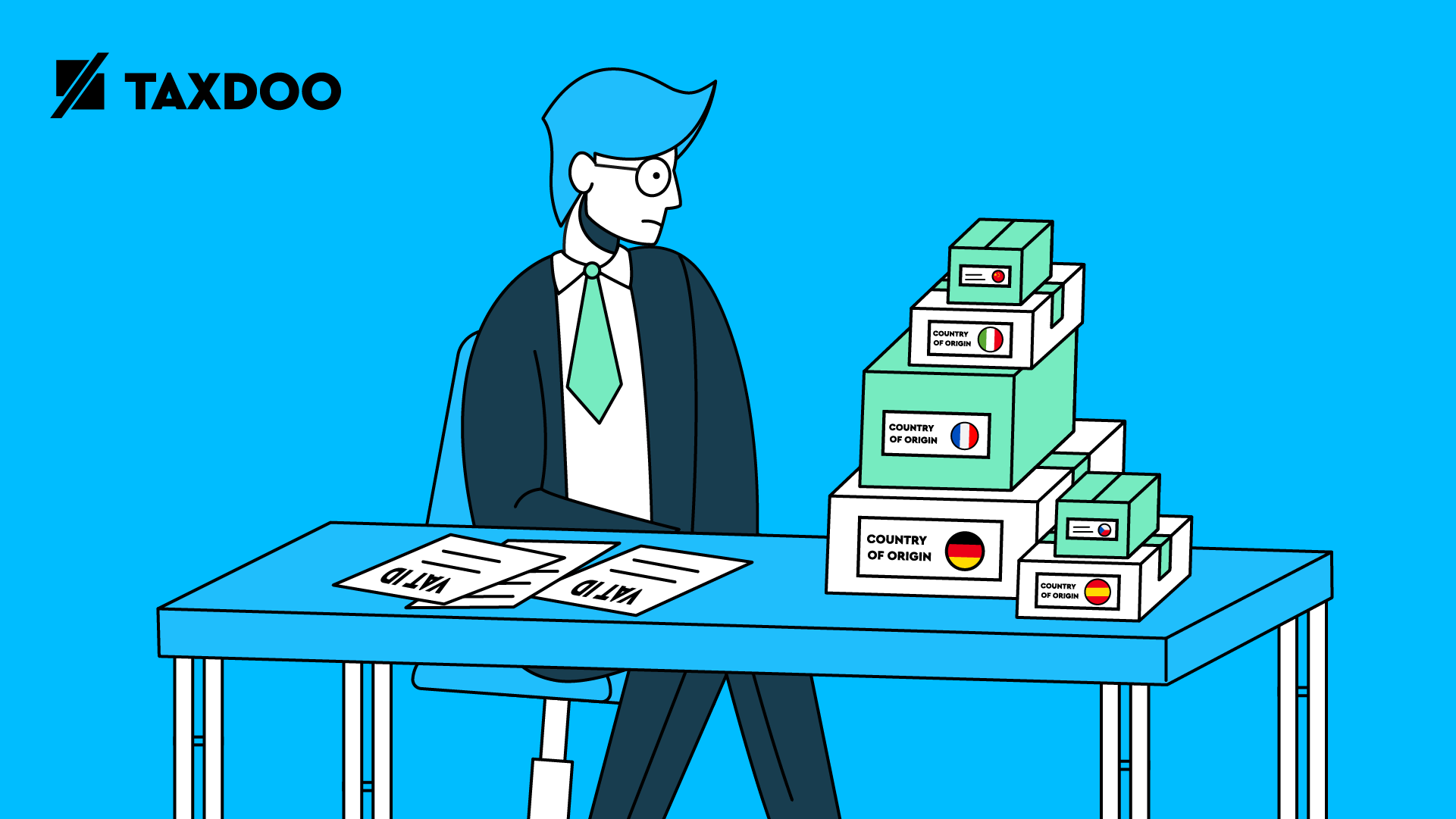Small business regulation and e-commerce

A lot of confusion in e-commerce is caused time and again by the so-called Small business regulation. Like so many regulations in tax law, it is unfortunately formulated rather circumstantially.
This has now led to numerous and widespread errors. We want to clarify these in the following and present to you the advantages and disadvantages of the small business regulation in the area of e-commerce.
All tax-free?!
You often hear or read that by applying the small business regulation you can settle everything tax-free.
This is fundamentally wrong.
If you fall under the small business regulation, the only exception is the collection of the Value Added Tax …to the other side of the border. That means: Basically you carry out taxable sales – Value Added Tax but you do not have to pay them to your tax office.
But the question is first of all: Who may enjoy this privilege under which conditions?
Small entrepreneurs: Who, when and for how long?
You may only apply the small business regulation in the country in which you are resident.
The small business regulation only applies if your turnover is within the following limits. The previous and current calendar year must always be taken into account.
- Previous calendar year: Your turnover in the previous calendar year must not have exceeded 17,500 euros (incl. Value Added Tax).
- Current calendar year: In the current calendar year your turnover may not exceed probably EUR 50,000 (incl. Value Added Tax) shall not be exceeded. Expected means that, based on an appropriate forecast, this turnover will not be exceeded in the current calendar year.
Thus, both limits – that of the previous year and that of the current year – must always be observed. This kind of “template”-consisting of the previous year and the current year-you move on each calendar year and check the requirements.
The following example illustrates this:
An entrepreneur who has turned over less than 17,500 euros in 2016 and will turn over about 45,000 euros in 2017 according to his own prognosis, may also apply the small business regulation in 2017.
In the calendar year 2018, the application of the small business regulation is no longer permitted, since in the previous year (2017) more than 17,500 euros were sold – if the own forecast (45,000 euros) is correct.
What if I have just started my business or want to start one?
In this case only the limit of 17,500 euros applies. It is also important that the 17,500 euros are related to the entire calendar year. If you are only doing business in one part of the year, you have to extrapolate your turnover to the calendar year.
As you do not know the actual turnover at the beginning of your activity, the law requires a forecast, which you must always provide to the tax office when you register your business.
The following example illustrates this.
You found your company on 01 September 2017 and expect a turnover of 6,000 Euro until the end of the year including Value Added Tax.
Question: May you apply the Small Business Act 2017?
Answer: Nobecause the turnover for the entire calendar year is: 3 x 6,000 euros = 18,000 euros.
Not all sales are relevant
However, not all sales are relevant for the calculation of the thresholds. If you sell fixed assets (for example, an old notebook), this sales volume is not included in the calculation of the threshold value. A number of tax-exempt sales are also excluded, although these do not play a major role in e-commerce (especially online trading).
What should my bills say?
If you are a small business, you will still have to issue invoices for your supplies or services if your customers are also entrepreneurs. You are also obliged to issue invoices if you send your products to final consumers in other EU countries.
The mandatory invoice details then also apply to you in principle, with one exception: You may Value Added Tax not show these separately, as you will not pay them to the tax office.
If you nevertheless issue invoices with a proven Value Added Taxstatement, you are obliged to pay these to your tax office.
Often you can read that small business owners are obliged to include the following note on their invoice: No separate disclosure of Value Added Taxsmall subcontractors within the meaning of § 19 UStG.
This note is not required for VAT purposes. However, it can save you having to answer questions from customers or business partners.
Disadvantages of the small business regulation
The small business regulation also entails some risks and disadvantages.
Disadvantage I: Increased risk of warning
In principle, small businesses are also obliged to use the incl. Value Added Tax to perform. As explained above, this is also correct from a VAT point of view.
However, in this case, an entrepreneur who buys from you could assume that he will be reimbursed by his tax office Value Added Tax as so-called input tax. As we have explained, however, as a small business owner you are not allowed to issue invoices with declared Value Added Tax value. Therefore, an entrepreneur who buys from you will not have any input tax deduction.
This buyer could therefore offer you misleading commercial act which often leads to a warning.
Disadvantage II: No refund of input tax
At the company level, this is intended to have a neutral effect in Value Added Tax principle. Therefore, entrepreneurs can have the Value Added Taxinput tax on their purchases of goods or services refunded by their tax office as so-called input tax.
However, small entrepreneurs are not entitled to a refund of input tax.
For this reason, the advantage from the Small Business Act is less than it appears at first sight. Especially in the start-up phase, you will probably make extensive investments (e.g. office equipment) or need advice (e.g. from lawyers and notaries). Due to the lack of input tax deduction, this will be more expensive for you than without the small business regulation.
Common misconceptions
In addition to these disadvantages, a number of errors persist, which we will list here briefly.
Error I: No VAT-IdNr. for small business owners?
This rumour persists. Often it is even claimed that applying for an VAT-IdNr. leads to the fact that you have to take Value Added Tax off.
This is wrong.
Especially if you are a small business and buy services and supplies from abroad, …you must have an VATID number. Why?
These two examples illustrate the problem.
Example 1
You buy your goods from a manufacturer in Hungary. If you do not give your manufacturer a VAT-IdNr., they will correctly charge you 27% HungarianValue Added Tax.
This Hungarian Value Added Tax one, however, you will not be reimbursed, so that it becomes a definite charge. If you give your German VAT-IdNr., the supplier has to give you a net invoice. You will have to pay tax on the receipt of the goods in Germany as a so-called intra-community purchase – but in this case the tax rate is only 19 percent.
Example 2
Amazon will charge you basic fees, commissions and, if applicable, other services rendered Amazon to you for the use of the Marketplace.
If you do not deposit an VATID number, you will receive Amazon a gross invoice instead of a net invoice.
In addition, you must always pay 19 percent German Value Added Tax on the net amount to your tax office. Behind this is the so-called Reverse charge procedure which applies when foreign entrepreneurs provide services to you.
If you do not deposit an VATID number with Amazon us, you are obliged to pay twiceValue Added Tax : once to Amazon and once to your tax office.
Error II: No submission of Value Added Tax-declarations?
If you are a small business owner, you do not have to make monthly or quarterly Value Added Taxpre-registrations.
However, the tax office may ask you to submit an Value Added Taxannual return. You must comply with this requirement in any case.
However, there are two exceptions: If you have inputs that fall under the Reverse charge procedure and/or you make intra-Community acquisitions, you Value Added Tax must also pay to the tax office and are therefore obliged to make advance returns.
If this tax is less than 1,000 euros per calendar year, the tax office can (and very probably will) exempt you from filing Value Added Taxadvance returns. In this case, however, you must submit an Value Added Taxannual return in any case.
Error III: I start first and then we look further
A piece of advice that is as well-intentioned as it is bad is the following:
“Start trading privately on Amazon or eBay first. “Once it’s up and running, you can still do it commercially. When in doubt, just invoke the small business rule.”
This advice is wrong and can cost you a lot of money.
Only recently, the Federal Fiscal Court again made clear how low the thresholds for entrepreneurial and thus taxable trade are. Important: The Value Added Tax Act is based solely on the intention to generate income. The intention to generate income is therefore not decisive for achieving taxable turnover.
If the tax office takes up such fictitious private individuals, the subsequent payment can sometimes be avoided with the small business regulation.
However, a current judgement carries a corresponding risk. In this case, the turnover of the sham private was above the limits of the small business regulation. The argument that the forecast had been lower at the beginning of the year could not be accepted by the tax court because this forecast had not been documented to the tax office (e.g. in the context of the registration of the company).
The end of the small business regulation
If at any time you exceed the limits of the small business regulation, you automatically switch to the so-called standard taxation.
However, you can also waive the application of the small business regulation right at the beginning.
Transition to standard taxation
There may come a time when you fall outside the boundaries of the small business regulation. This so-called transition to standard taxation (i.e. transfer of 19 or 7 percent Value Added Tax to the tax office) can bring with it some stumbling blocks.
The following example explains the most important problem:
In 2016 you were still a small entrepreneur and by the end of 2016 you had collected more than 17,500 euros. On 28 December 2016 you still buy goods to the value of 11,900 euros gross (incl. 19 percentValue Added Tax).
From 01.01.2017 you have to pay 19 percent Value Added Tax from your turnover, because you have turned over more than 17.500 Euro in the previous year.
This leads to the following Input tax dilemma:
In 2016 you were not entitled to a deduction of input tax due to the small business regulation. However, you will still have to pay on your deliveries from 01.01.2017Value Added Tax . If you had waited until 01.01.2017 to purchase the goods, you could have had the 1,900 euros Value Added Tax on the purchase of goods refunded by the tax office as input tax.
In principle, it would be possible to have the lost input tax from the year 2016 refunded pro rata temporis. VAT law sets a fictitious input tax period of 5 years for most economic goods (except for real estate). Thus, you would basically be entitled to a retrospective refund of 4/5 (in simplified terms) of the original input tax amount from 2016.
However, this regulation only applies if the input tax amount per asset was more than 1,000 euros. This means that for a large part of the purchases, a subsequent pro rata refund of input tax should not normally be possible.
Waiver of the small business scheme
The fact that small businesses cannot claim a deduction of input tax can be disadvantageous, as we explained above, especially when planning larger investments. For this reason, it is possible to waive the small business rule.
This waiver works as follows:
- It must be declared informally to the tax office. It would even suffice in principle if you just start to pay the tax office Value Added Tax on your sales. This is called an implied waiver.
- The waiver always takes effect from the beginning of a calendar year.
- The waiver binds you for 5 calendar years.
- The waiver can also be declared subsequently. This is possible as long as the objection period for the annual VAT return for the relevant calendar year is still running.
Especially the subsequent waiver can often be useful if one has made unexpectedly high investments in the course of the calendar year and it is foreseeable that sales will soon exceed the mentioned limits.
Cross-border trade and delivery thresholds
Even as a small business owner you can easily come into contact with foreign customers when trading via electronic marketplaces. There are a few more things to consider.
B2B transactions
If you, as a small business, ship to B2B customers in another EU country, there is no tax-free intra-Community supply. For small businesses, deliveries to other business customers in other EU countries are generally taxable in Germany. However, as described above, this Value Added Tax is not levied.
But what about transactions that have to be taxed in other EU countries?
B2C transactions
Even as a small business owner it is possible to
to other EU countries. In this case all your deliveries, which exceed the delivery threshold, would also be taxable abroad.
One question that keeps coming up in this context is: does the small business regulation also apply to other EU countries?
The answer is: No.
There are similar regulations in many EU countries. However, these are often limited to companies based in the respective EU state. The use of a fulfillment center (from, for example, Amazon) or exceeding the delivery threshold does not count as residence.
Conclusion
The Small Business Act gives entrepreneurs a small competitive advantage under certain conditions.
It is almost ideal for classic service providers in the B2C sector who work without a high input of goods and can forecast their sales very accurately.
However, this regulation is often hardly up-to-date for online trade. The disadvantages and risks mentioned can very quickly overlay the advantages.
Weitere Beiträge

VAT in the Digital Age – The Next VAT Reform for E-Commerce?

One-Stop-Shop (OSS) EU VAT for E-Commerce
